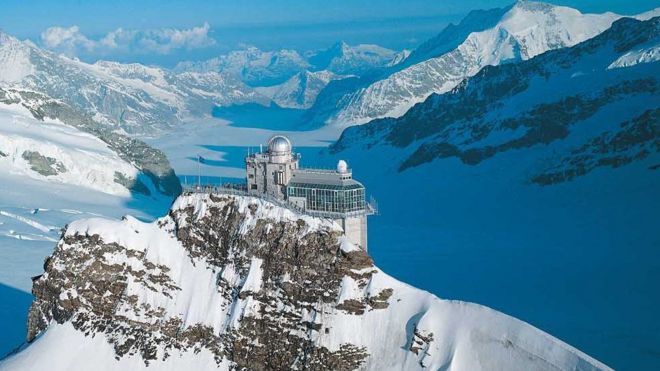"Dodgy' greenhouse gas data? They left data on greenhouse gases out of the IPCC reports. Who would have thought?!
Of course they did!
They
lied, and continue to lie.
What
is amazing is that this revelation comes from the BBC.
'Dodgy' greenhouse gas data threatens Paris accord
By
Matt McGrathEnvironment
correspondent

BBC,
7
August, 2017
Air
monitors in Switzerland have detected large quantities of one gas
coming from a location in Italy.
However,
the Italian submission to the UN records just a tiny amount of the
substance being emitted.
Levels
of some emissions from India and China are so uncertain that experts
say their records are plus or minus 100%.
These
flaws posed a bigger threat to the Paris climate agreement than US
President Donald Trump's intention to withdraw, researchers told BBC
Radio 4's Counting Carbon programme.
Among
the key provisions of the Paris climate deal, signed by 195 countries
in December 2015, is the requirement that every country, rich or
poor, has to submit an inventory of its greenhouse-gas emissions
every two years.
Under
UN rules, most countries produce "bottom-up" records, based
on how many car journeys are made or how much energy is used for
heating homes and offices.
But
air-sampling programmes that record actual levels of gases, such as
those run by the UK and Switzerland, sometimes reveal errors and
omissions.
In
2011, Swiss scientists first published their data on levels of a gas
called HFC-23 coming from a location in northern Italy.
Between
2008 and 2010, they had recorded samples of the chemical, produced in
the refrigeration and air conditioning industries, which is 14,800
times more warming to the atmosphere than CO2.
Now
the scientists, at the Jungfraujoch Swiss air monitoring station,
have told the BBC the gas is still going into the atmosphere.
"Our
estimate for this location in Italy is about 60-80 tonnes of this
substance being emitted every year, then we can compare this with the
Italian emission inventory, and that is quite interesting because the
official inventory says below 10 tonnes or in the region of two to
three tonnes," said Dr Stefan Reimann, from the Swiss Federal
Laboratories for Materials Science and Technology.
"They
actually say it is happening, but they don't think it is happening as
much as we see.
"Just
to put it into perspective, this greenhouse gas is thousands of times
stronger than CO2.
"So,
that would be like an Italian town of 80,000 inhabitants not emitting
any CO2."
The
Italian environment agency told the BBC its inventory was correct and
complied with UN regulations and it did not accept the Swiss figures.
Another
rare warming gas, carbon tetrachloride, once popular as a refrigerant
and a solvent but very damaging to the ozone layer, has been banned
in Europe since 2002
.
Coal
use in China has been subject to major revisions in the country's
statistics
But
Dr Reimann told Counting Carbon: "We still see 10,000-20,000
tonnes coming out of China every year."
"That
is something that shouldn't be there.
"There
is actually no Chinese inventory for these gases, as they are banned
and industry shouldn't be releasing them anymore."
China's
approach to reporting its overall output of warming gases to the UN
is also subject to constant and significant revisions.
Its
last submission ran to about 30 pages - the UK's, by contrast, runs
to several hundred.
Back
in 2007, China simply refused to accept, in official documents, that
it had become the largest emitter of CO2.
"I
was working in China in 2007," said Dr Angel Hsu, from Yale
University.
"I
would include a citation and statistics that made this claim of
China's position as the number one emitter - these were just stricken
out, and I was told the Chinese government doesn't yet recognise this
particular statistic so we are not going to include it."
A
report in 2015 suggested one error in China's statistics amounted to
10% of global emissions in 2013.
The
BBC investigation also discovered vast uncertainties in carbon
emissions inventories, particularly in developing countries.
Methane,
the second most abundant greenhouse gas after CO2, is produced by
microbe activity in marshlands, in rice cultivation, from landfill,
from agriculture and in the production of fossil fuels.
Global
levels have been rising in recent years, and scientists are unsure
why.
For
a country such as India, home to 15% of the world's livestock,
methane is a very important gas in their inventory - but the amount
produced is subject to a high degree of uncertainty.
There
are huge uncertainties over methane emissions from India and other
countries
"What
they note is that methane emissions are about 50% uncertain for
categories like ruminants, so what this means is that the emissions
they submit could be plus or minus 50% of what's been submitted,"
said Dr Anita Ganesan, from the University of Bristol, who has
overseen air monitoring research in the country.
"For
nitrous oxide, that's 100%."
There
are similar uncertainties with methane emissions in Russia, of
between 30-40%, according to scientists who work there.
"What
we're worried about is what the planet experiences, never mind what
the statistics are," said Prof Euan Nisbet, from Royal Holloway,
University of London.
"In
the air, we see methane going up. The warming impact from that
methane is enough to derail Paris."
The
rules covering how countries report their emissions are currently
being negotiated.
But
Prof Glen Peters, from the Centre for International Climate Research,
in Oslo, said: "The core part of Paris [is] the global
stock-takes which are going to happen every five years, and after the
stock-takes countries are meant to raise their ambition, but if you
can't track progress sufficiently, which is the whole point of these
stock-takes, you basically can't do anything.
"So,
without good data as a basis, Paris essentially collapses. It just
becomes a talkfest without much progress."



No comments:
Post a Comment
Note: only a member of this blog may post a comment.